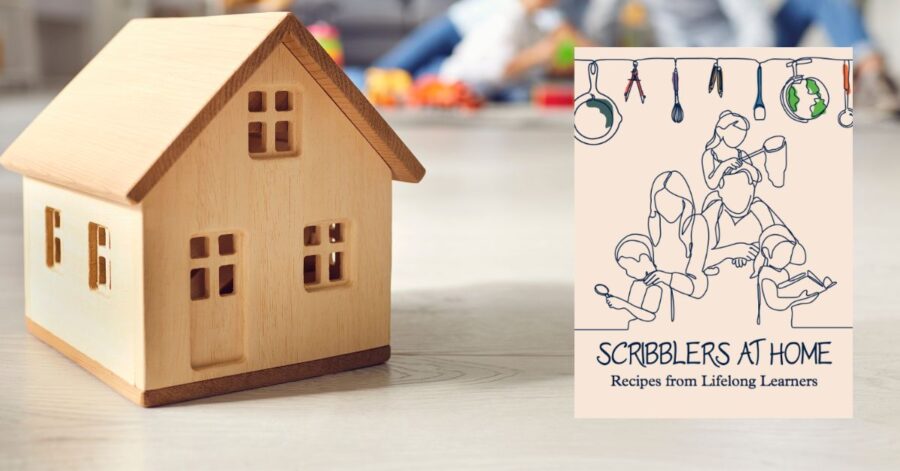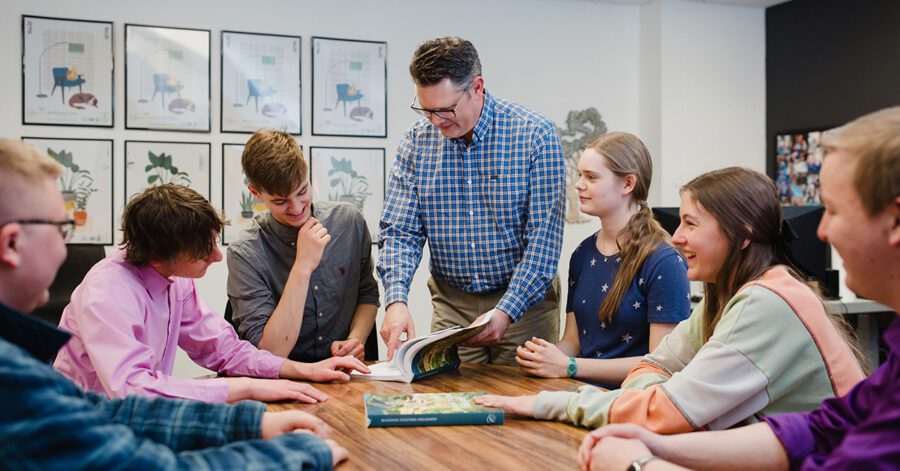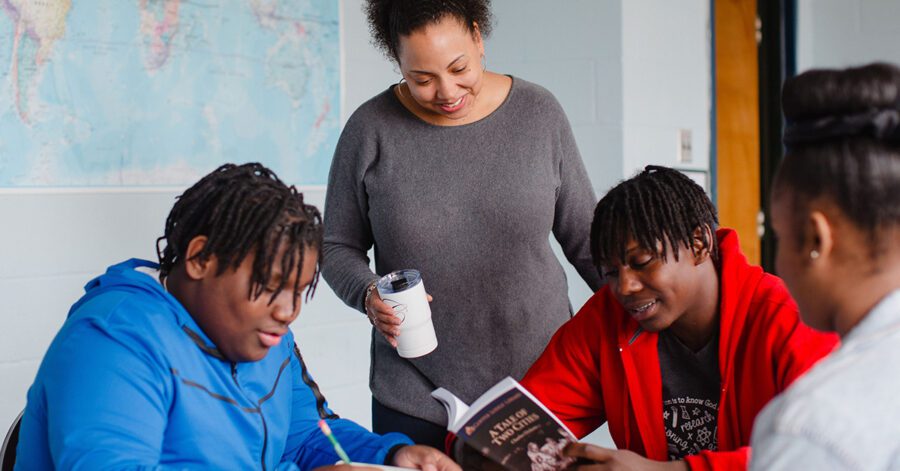I have a sneaking suspicion that Scribblers at Home: Recipes from Lifelong Learners is the most versatile resource in the CC Catalog. I realize that might be quite a claim, and that I might be a little prejudiced, being one of those “lifelong learners” mentioned in the title. But let me show you what I mean!
The Foundation of Lifelong Learning: Understanding Scribblers at Home
The award-winning Scribblers resembles a blueprint for the classical, Christian education encouraged by our Classical Conversations programs. The foundations are all there, laid out clearly in the early sections of the book. Families are reminded to consider our purposes for educating at home; we are prompted to delve into the skills that will make learning for a lifetime a thing of beauty and a joy forever.
We are provided with the “whys” and “whats” and “hows” of each area of study. And these ideas are foundational no matter how old our children are or how long we have been homeschooling! Many families have discovered that Scribblers shows us not only “how to begin well” but where we are going—and offers reminders all along the way of what we’re learning and how it applies to our next steps.
But even more importantly, families are urged to build a home culture of learning that promotes deeper connections, more play and fun, a return to wonder, and a simplicity that resonates.
Building a Family Culture of Learning Through Play and Exploration
When we learn and play together, our family creates shared memories. The whole family knows the same jokes, recognizes the same story characters, remembers the same experiment results. These shared memories mean we all understand the family jokes and references; great camaraderie is built. (I’ve often thought that the saying should be “the family that plays together stays together”!)
Exploring new places and ideas together encourages extra wonder; discovery that is shared doubles our delight by allowing us to see things through others’ eyes as well as our own. These shared learning times teach us to love and appreciate one another more deeply; they provide opportunities for mercy, grace, kindness, compassion, gentleness, helpfulness, and patience.
We find that we each have something important to bring to family explorations and read-alouds; every perspective has value and there is much beauty in learning from every member. Little learners are often the best attenders, and many insights come when they note what others rushed past. Older learners are able to see how the “beginning ideas” have become fleshed out and have led to greater understanding.
The original goal of Scribblers was to encourage parents that intentional play is immensely valuable to little learners; as the saying goes, “Play is the work of childhood.” Often we forget that playing teaches us things when we’re not looking, and in gentle ways that we remember with great fondness.
Studies show that learned skills and ideas that are associated with happy memories are retained more easily; they are certainly repeated more happily!
The Power of Play: Why Scribblers Works for All Ages
Many of us are quite willing to play with our youngest children . . . but we seem to forget to play as our children begin to grow up—what a mistake! We all still learn from play, and one of the things we learn is to be joyful. Using a Scribblers activity as a family allows us to chase the joy, have fun together, be silly, run around, do “kid things” that we used to love but don’t do anymore. Let’s forget our dignity—do the silly things and build a memory.
The activities in Scribblers are designed with young children in mind, but they are really for anyone who wants to chase wonder! God’s world is so amazing, so intricate, so surprising, so beautiful, so wonderful that we should all approach it as little children: eager to see more, willing to be astonished, ready to dive right in.
When we explore with open minds, slowing down enough to look, listen, smell, touch, even taste, we get back in touch with our wonder. I believe God wants us to be amazed, not just educated. Sometimes, we need to just wonder, not understand. Scribblers encourages that kind of response.
Perhaps it is easy to see how Scribblers can be a great learning tool for little learners. The engaging activities whet the appetites for knowledge, providing lots of new vocabulary, new ideas, and new experiences. These activities are a wonderful introduction to Latin, history, reading, science, math, and Bible. But children ages 8–12 will love it too!
The activities in Scribblers give our older kids a chance to “be the teacher” while adding to their base knowledge in many areas. These fun, active games and projects allow kids to revisit material with confidence, building mastery. When families play together, younger kids begin to see connections as older kids talk about what they are noticing or remembering. Even Challenge-age kids can enjoy Scribblers fun!
For our Challenge students, Scribblers is a restful reminder that learning is fun; it gives them permission to play! Older kids will enjoy telling about how the games they’re playing with the “little kids” are setting the bases for what the littles will learn later; it gives them a chance to become rhetorical as they teach their siblings what “else” they know.
Remember, those charts included with every Scribblers activity give the structure or skeleton of each piece of learning; many of our Challenge students rely on these charts to refresh their memories of “the basics.” Challenge parents tell me they keep Scribblers charts handy to review with their students all the time.
For parents, the Scribblers stories, games, and activities reawaken our childhood wonder and love of play. They help connect us to our children’s modes of learning, encouraging us to read and listen and explore and create. Scribblers calls us to be the lead learners in our homes and to show our kids how much fun it is to explore and discover together.
Simplifying Homeschool Life with Scribblers’ Core Activities
One of the best reasons to use Scribblers as a family is simplicity. We all have days when we are left with the “worry refrain”: “Did I do enough?” Here’s a principle to hold to: If every day you prayed together, played together, read together, explored together, and served together, it has been a good day!
Especially in these last days of summer, doesn’t it make sense to do more of life together? When we pray together, we are looking up, seeking God. How might God call our family into His service today? When we play together, we channel the child in all of us; who needs to be intentionally playful or silly today?
When we read together, we get to ponder new ideas and situations; we get to savor words and live vicariously. What can we learn from one another’s insights? When we explore together, we benefit from our individual perspectives. What can we see (or hear) from another’s observations?
When we serve together, we become God’s hands and feet as a unit. Maybe we learn to serve family first, then community, then the world. But more than these five verbs, Scribblers at Home offers more than one hundred activities that families will love doing together.
Putting Scribblers into Action: A Family-Friendly Debate Activity
One of my favorite family-friendly activities is in the History strand, on pages 258 and 259 of Scribblers at Home. The supplies needed are almost always on hand in a homeschooling household: index cards and pencils. (Of course, any paper will do!) The activity takes very little prep time and actually incorporates a chore we all have to do: go to the grocery store and choose breakfast cereal. Be honest, don’t all your kids feel the need to lobby for their favorite cereal? Why not make a game of the choice and learn something while you’re at it . . .
Before leaving for the store, have your children consider the cereal they want. Give them an index card (or piece of paper) and fold it in half. On one side they write their name and their “position”: “I’m Lisa, and I’m telling why I think we should buy Captain Crunch today.” On the other side of the card, they should write (or dictate to a writer) their three reasons.
Before the cereal debate begins, review the rules of good listening and polite responses if your choice is not supported. After each child presents his case (his reasons and any supporting claims), he announces that he is ready for questions. Everyone gets to ask questions! After all presentations are complete, the parent-moderator gives feedback and a final decision. After the debate, head to the store and buy cereal! (Maybe reward all the debaters with their choice and have a taste-test!)
Everybody has fun here, and everyone is able to participate. Younger children can certainly tell their preferences and give their reasons. Older children (especially Challenge students with debate experience) may construct more sophisticated reasons that have taken into account their audience and what might be persuasive to the “judge.”
Little kids get to practice their presenting and listening skills. Older kids get to know the elements of a simple debate. Challenge kids get to think about modes of persuasion and how to offer their most compelling reasons. The best part is in the sharing, the conversations, the questions, and the chance to have fun together.
Many of us are looking for easy ways to get back to learning after a summer of ease; what better way than to keep playing, but with purpose! These “recipes” in Scribblers at Home: Recipes from Lifelong Learners really are engaging suggestions, ready for family-style enjoyment.
As a “family fun cookbook,” Scribblers is a resource that promotes deeper connections, more play and fun, a return to wonder, and a simplicity that resonates with busy families. I truly believe your family will enjoy stirring up some fun with Scribblers.





